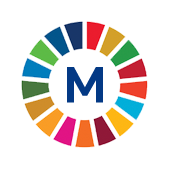 4.3.1 Participation rate of youth and adults in formal and non-formal education and training in the previous four weeks, by sexMetadataPeriod: AnnualYear: 2025 |
 4.3.1 Participation rate of youth and adults in formal and non-formal education and training in the previous four weeks, by sexMetadataPeriod: AnnualYear: 2025 |
| METADATA |
| Indicator information |
| Definition and methodology |
| Data source type and data collection method |
| Notes |
| ID of global indicator |
| Metadata update |
| Global metadata |
| Indicator information | Top |
| Indicator | |
4.3.1 Participation rate of youth and adults in formal and non-formal education and training in the previous four weeks, by sex | |
| Global indicator name | |
4.3.1 Participation rate of youth and adults in formal and non-formal education and training in the previous 12 months, by sex | |
| Target | |
4.3 By 2030, ensure equal access for all women and men to affordable and quality technical, vocational and tertiary education, including university | |
| Goal | |
Goal 4. Ensure inclusive and equitable quality education and promote lifelong learning opportunities for all | |
| Definition and methodology | Top |
| Definition | |
The percentage of youth and adults in a given age range (15-24 years, 25-64 years) participating in formal or non-formal education or training in a given time period (4 week prior to the survey). | |
| Methodological explanations | |
Formal education is defined as a structured and institutionalized system regulated by the state.
The data have been obtained from Labour Force Survey. | |
| Method of calculation | |
The number of individuals in the corresponding age groups participating in formal or non-formal education or training, in proportion to the population of the same age group | |
| Unit of measure | |
% | |
| Available disaggregation | |
Gender, Age groups | |
| Territorial level | |
Republic of Serbia | |
| Data source type and data collection method | Top |
| Data source | |
Statistical Office of the Republic of Serbia | |
| Periodicity of data collection | |
Annual | |
| Notes | Top |
Education in the past 12 months was introduced as a biennial variable in 2021 by Eurostat, when this question first appeared in the questionnaire. In contrast, data for the variable referring to education in the past four weeks exist for a long time series and are available on an annual (and quarterly) basis. This is the reason for providing data for the past four weeks, as otherwise, the time series would be lost. The title of the SDG indicator has not been changed; however, a note has been added in the metadata indicating that it refers to the past four weeks rather than 12 months. Break in data series in 2021 because of methodological changes due to harmonization with the latest Eurostat regulation. The break of the time series exists in 2014 and 2008 as well. | |
| ID of global indicator | Top |
C040301 | |
| Metadata update | Top |
| 13/6/2025 | |
| Global metadata | Top |
https://unstats.un.org/sdgs/metadata/files/Metadata-04-03-01.pdf | |